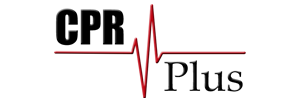Although there are several types of fireplaces; gas, electric, or wood burning, there are potential and unique risks involved with each one. Here you will become educated on the cautions and risks you take using an indoor fireplace in your home. Be sure to review these points with your family.
Safety Preparation
Due to the potential for danger unrelated to fires, such as water damage and mold, and insect and animal infestation, you want your fireplace and chimney inspected annually. Fire related risks can be blockages and excessive soot that an prevent proper ventilation. In addition, you should install a safety screen to prevent children from burning themselves by touching hot glass fronts of fireplaces. All fireplace related tools should be placed far out of children’s reaches. This includes lighters, matches, pokers and other tools. A fire extinguisher should be kept in an accessible place within the same room, and both fire detectors and carbon monoxide detectors should be installed per code. Check the detectors monthly and change batteries once per year or as needed.
Safe Behaviors
Be sure your fireplace “flue” or “damper” is open before you start a fire. It’s not enough to think it is open. Make sure by looking up the chimney and seeing for yourself. This is the component of the fireplace that insures that smoke is being drawn up and away from you and your family inside the home. Make sure the fire is well put out before closing it. Remove children from a room that has an active fire in the fireplace, even if you’ll be gone only a few minutes. Express all safety with children every time you light the fireplace. Review regularly and implement a fire escape plan with your family aside from fireplace safety. Your family should plan 2 exits from each room, how to prevent being hurt if they feel trapped during a house fire, and a meeting place away from the home where you can count heads.
Minimize Smoke
Using quality, well aged, and dry wood will burn most evenly and create the least amount of smoke. Furthermore, you can clean the ashes from each fireplace session to insure that the next logs will receive adequate space and oxygen to burn optimally and produce the least amount of smoke. Cleaning the inside of the chimney is a regular maintenance measure, just as it should be inspected once per year. Visually inspecting monthly or between fires is a great measure you can take yourself.



